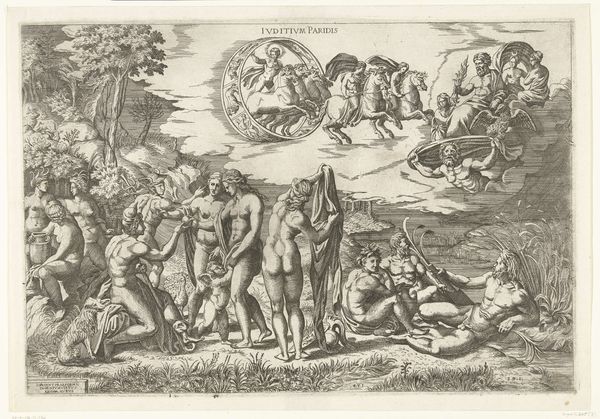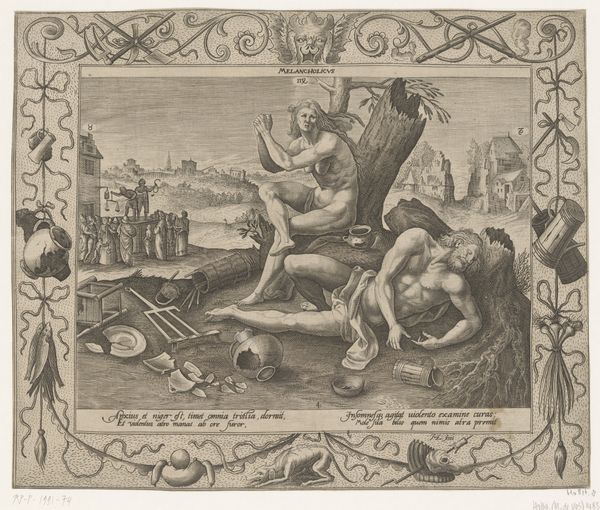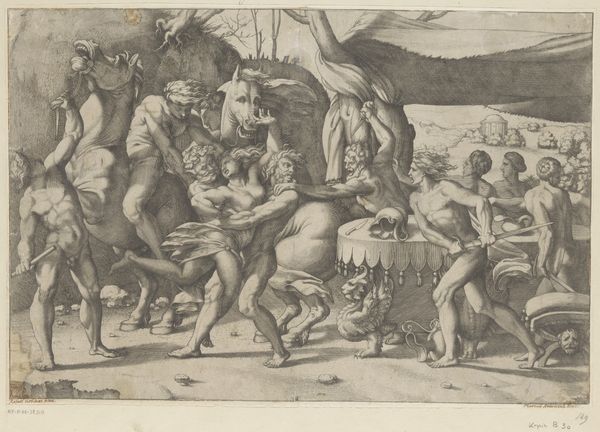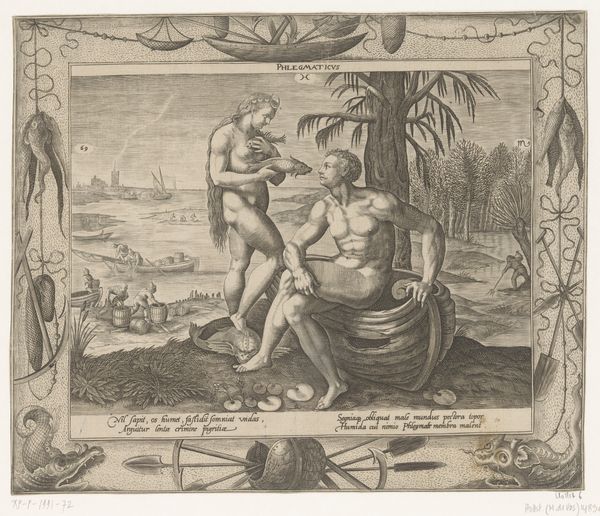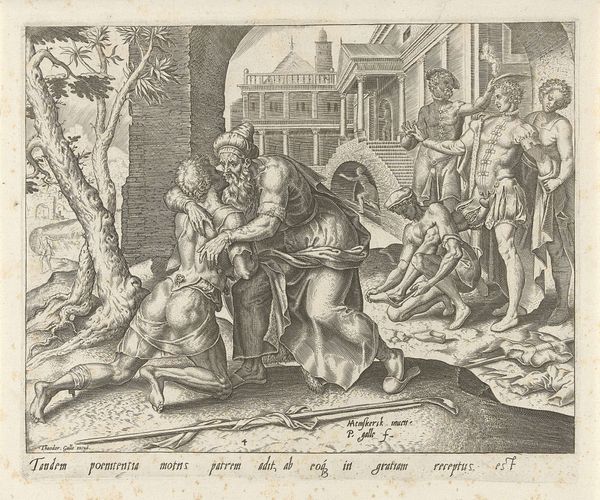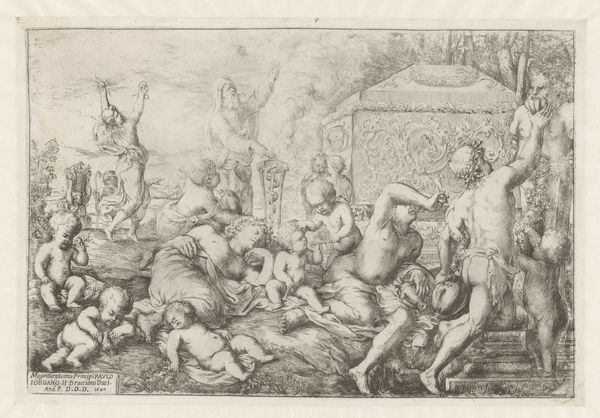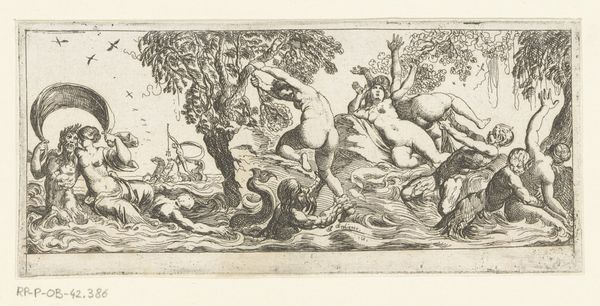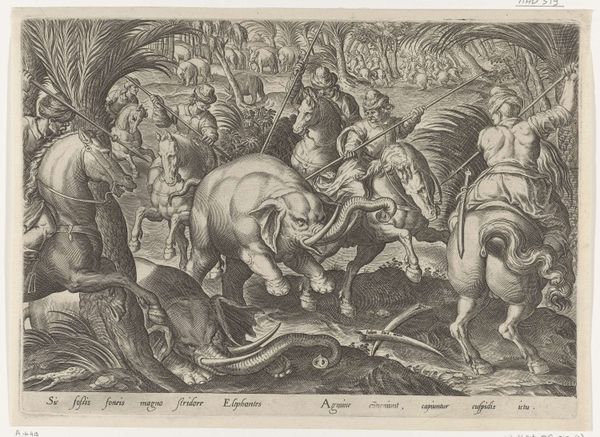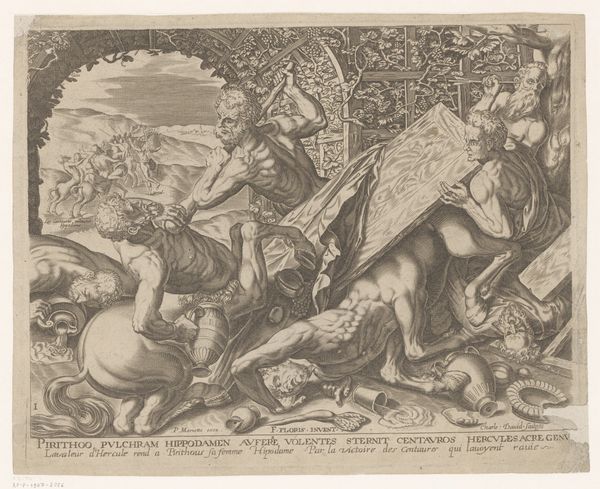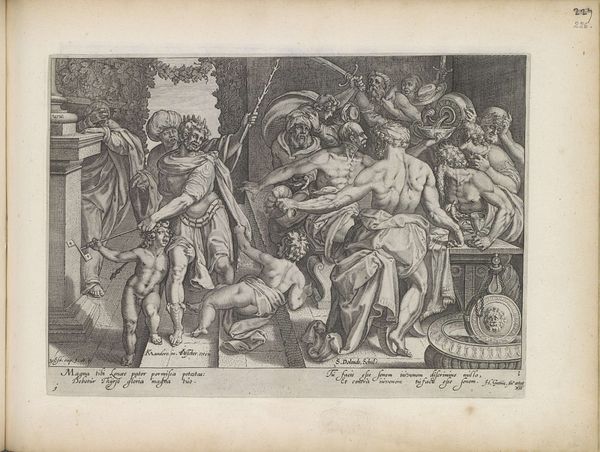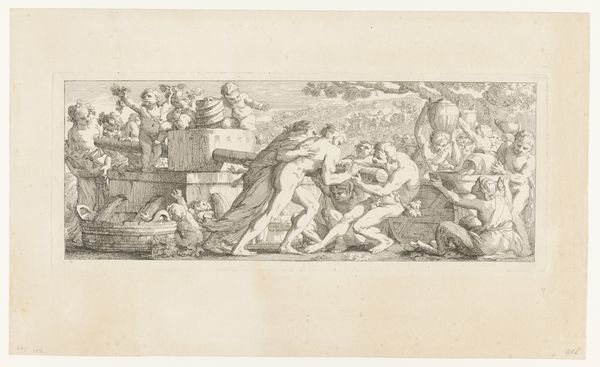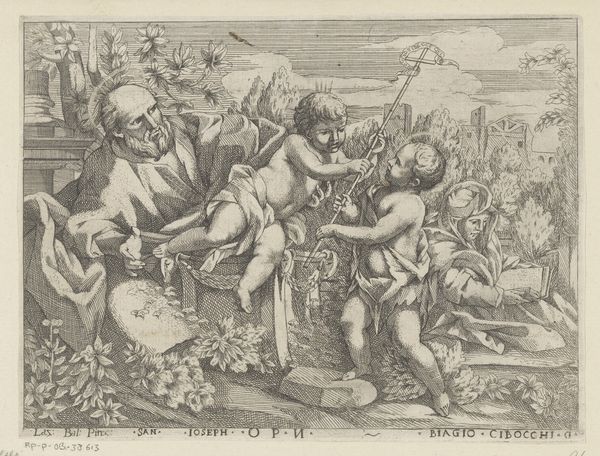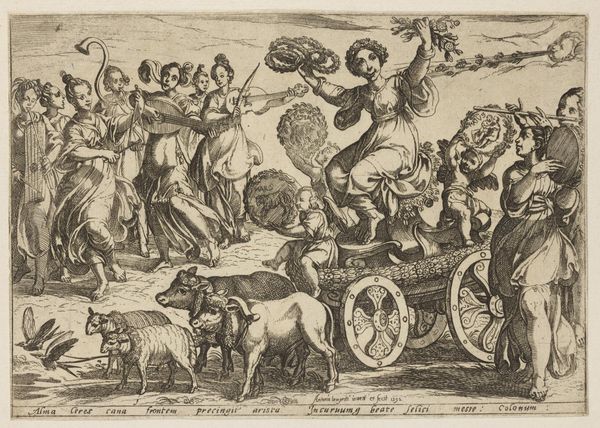
print, engraving
#
allegory
# print
#
landscape
#
figuration
#
11_renaissance
#
ancient-mediterranean
#
cityscape
#
history-painting
#
engraving
Dimensions: height 227 mm, width 322 mm, height 274 mm, width 362 cm
Copyright: Rijks Museum: Open Domain
Curator: This is "Amerika," an engraving dating from around 1570. Its creator is unknown, and it now resides here at the Rijksmuseum. Editor: My initial reaction is… ambivalent. There’s a stark contrast between the opulent figure and the landscape in the background, almost like two separate worlds colliding. Curator: Absolutely. The engraving depicts a female personification of America, reclining in a lavish chariot overflowing with gold and silver, pulled by what look like giant hounds. The inscription below reads, “America, I fill mine with gold and silver.” Editor: The indigenous figures in the background are very small and rendered without much detail, practically consumed by the landscape itself. They seem unaware or perhaps unconcerned by the approaching ships, hinting at imminent European arrival. What does this engraving tell us about Europe’s perspective during that era? Curator: It presents America as a source of immense wealth to be exploited, almost divinely sanctioned by this powerful female figure. Her confident gaze, the cornucopia of riches, even the exotic plumage atop her head—all serve to emphasize the abundance and exoticism that Europe associated with the New World. Editor: And yet, there's something unsettling about it. Those dogs pulling the chariot… they aren't noble steeds but rather animals yoked for labor. Curator: Precisely! The dogs could symbolize subjugation or even rapacity. The hounds are collared, clearly bound and leashed to a cause not their own, suggesting perhaps, the exploitation of indigenous resources, and in time, human labor for European profit. The symbolic weight, for a contemporary audience is really intense. Editor: I see the landscape itself as bearing significant weight as well. On the left side of the engraving, before a line of ships, there is another shoreline replete with flora, perhaps symbolizing the continent’s intrinsic value beyond just mineral resources. What do you make of this sharp visual delineation? Curator: It reinforces this notion of the New World as a sort of tabula rasa, an emptiness ready to be filled by European ambition and conquest. The figures working are dwarfed and shown in very rough ways. It speaks to Europe’s assumption that they were bringing not only wealth to their continent but that they are “building civilization.” Editor: Thinking about it now, there is much tension built into this single image! Curator: It’s true. By examining "Amerika," we can understand the intricate interplay of power, desire, and cultural assumptions that shaped the colonial narrative. Thank you for teasing out those powerful tensions with me! Editor: My pleasure.
Comments
No comments
Be the first to comment and join the conversation on the ultimate creative platform.
